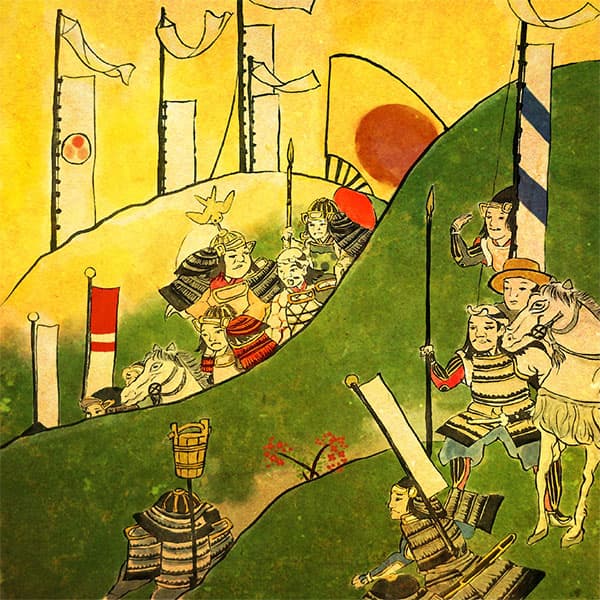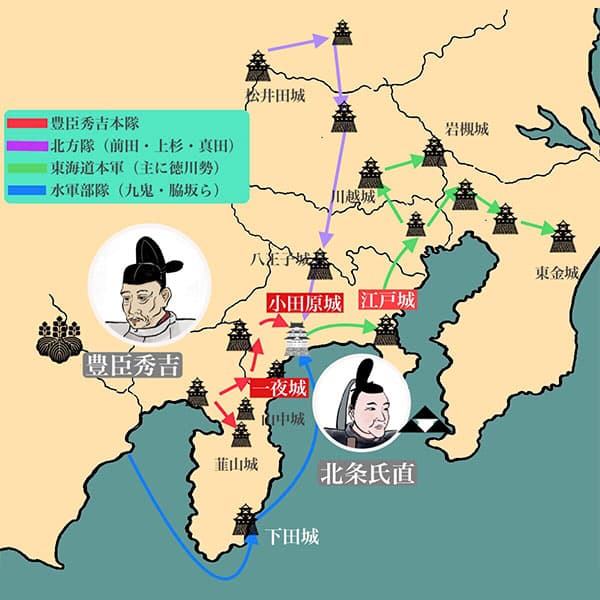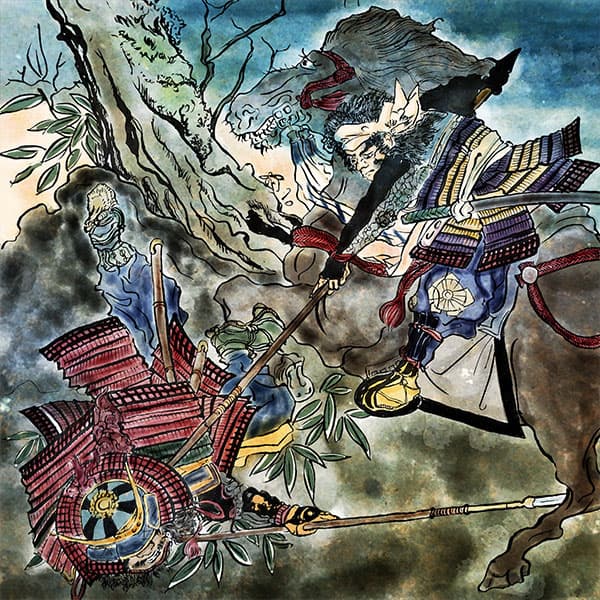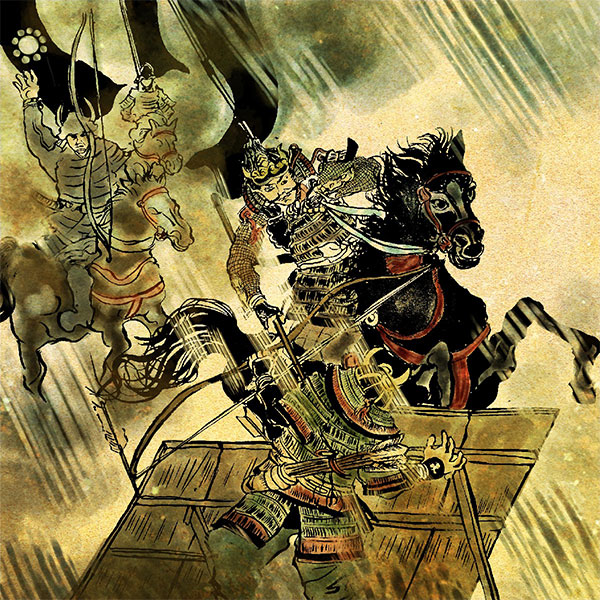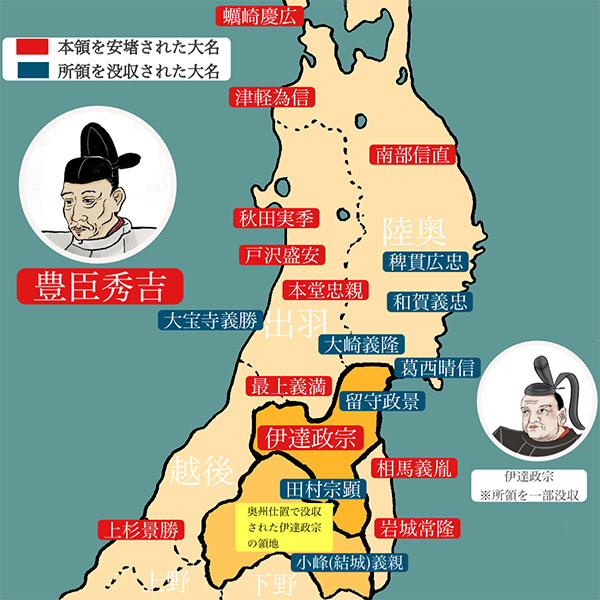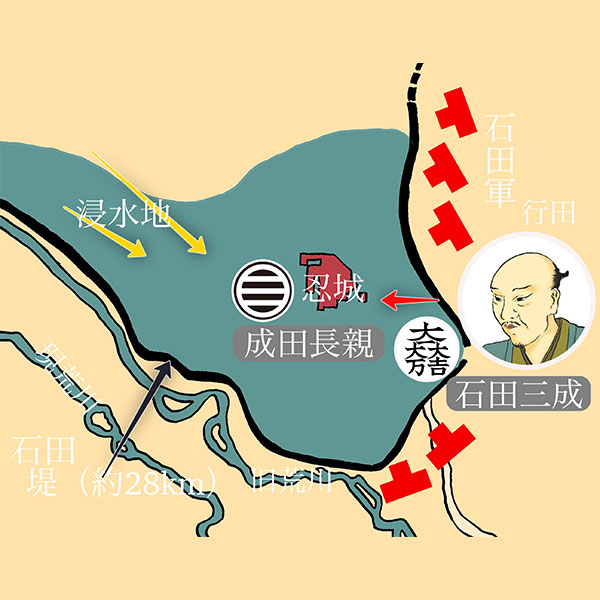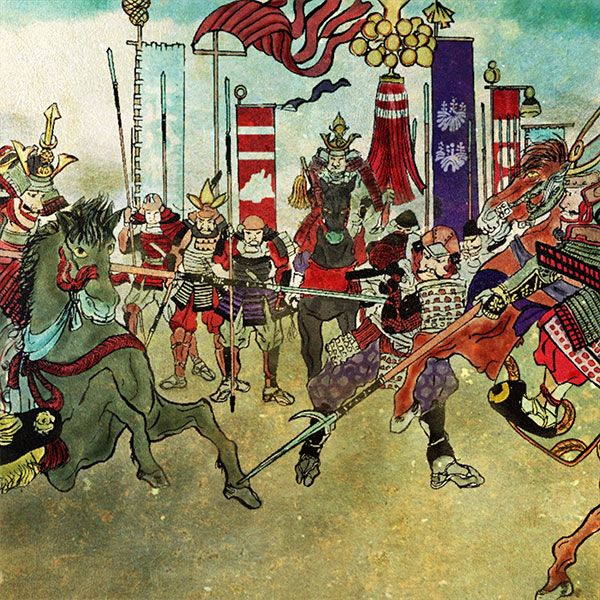Toyotomi Hideyoshi (2/2)The most successful person in the Sengoku period
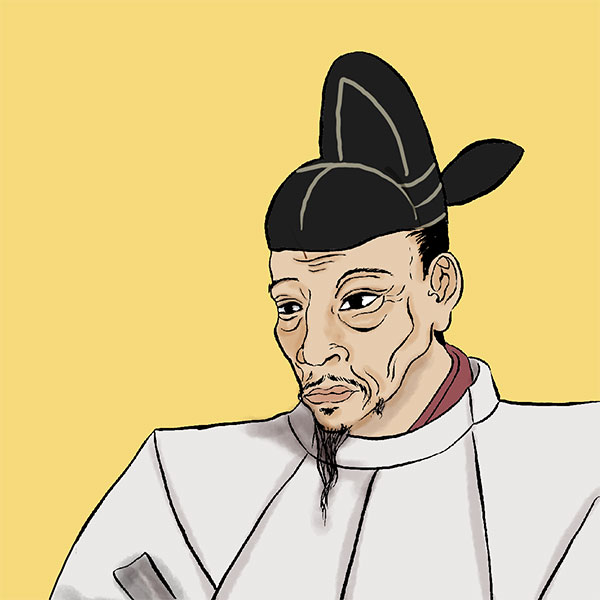
Toyotomi Hideyoshi
- Article category
- biography
- name
- Toyotomi Hideyoshi (1537-1598)
- place of birth
- Aichi prefecture
- Related castles, temples and shrines

Osaka Castle

Nagahama Castle

Fushimi Momoyama Castle

Ota Castle

Sunomata Night Castle
- related incident
Approximately three months later, in October 1582, Shibata Katsuie, together with Kazumasu Takigawa and Nobutaka Oda (Oda Nobunaga's third son), sent a letter impeaching Hideyoshi Hashiba to each daimyo.
In response, Hideyoshi held a funeral for Oda Nobunaga on October 15th. The chief mourner was Hidekatsu Hashiba (Nobunaga Oda's fourth son), but Hideyoshi actually carried out the funeral, giving the impression both at home and abroad that Hashiba Hideyoshi would take the lead after Nobunaga.
The following April, 1583, Katsuie Shibata and Hideyoshi Hashiba led their armies into a confrontation in Omi Province. (Battle of Shizugatake) Katsuie Shibata was defeated in this battle and committed suicide.
Here, Hideyoshi Hashiba won the political battle within the Oda family and was able to bring the Oda family, which he had been serving, under his control.
Toyotomi Hideyoshi and the unification of Japan
In 1584, Hashiba Hideyoshi was in conflict with Oda Nobuo (Oda Nobunaga's second son). Nobuo sought support from Tokugawa Ieyasu, who had become a major force in the Tokai region, and also sought support from the Chosokabe clan in Shikoku, Negoro and Saiga clan in Kishu, deepening the conflict.
Hideyoshi maintained the upper hand in this situation from beginning to end, but was defeated by Tokugawa Ieyasu at the Battle of Komaki-Nagakute, and the situation came to a stalemate. In order to resolve the situation, he made peace with Nobuo Oda, who had been at odds with him at first, and later made peace with the Tokugawa family, and Ieyasu Tokugawa also came under Hideyoshi Hashiba.
In 1586, Hashiba Hideyoshi was given the surname Toyotomi by the Imperial Court and began to call himself Toyotomi Hideyoshi. In the previous year, he had reached the highest level of personal status, serving as Kanpaku, the highest rank among court nobles.
Around this time, Toyotomi Hideyoshi unified all of Japan by conquering Shikoku in 1585, Kyushu in 1587, and conquering Odawara in 1590. .
The dispatch of troops to Korea and its end
In 1591, he lost his younger brother Hidenaga Hashiba and his newborn child Tsurumatsu one after another.
There, he adopted his nephew, Hidetsugu Toyotomi, and gave him the post of Kanpaku, calling himself Taiko (an honorific title for the former Kanpaku) and establishing a dual system.
In the same year, Toyotomi Hideyoshi announced that he would invade the continent, ``entering the Tang Dynasty.'' Hideyoshi's army invaded the Korean Peninsula from Kyushu and made good progress at the beginning of the war, but when Ming (China) reinforcements arrived, the war situation came to a stalemate and peace was attempted.
In 1593, Hideyoshi's son Toyotomi Hideyori was born. However, in 1595, Toyotomi Hidetsugu rebelled, and as a result, Hidetsugu was ordered to commit suicide.
Amid this turmoil within the Toyotomi family, peace negotiations with the Ming Dynasty broke down in 1596. Hideyoshi dispatched troops to Korea again. The advancing army set up bases in various places and took control, but the battle dragged on.
While this battle was going on, Toyotomi Hideyoshi passed away on August 18, 1598, at the age of 62.
The Toyotomi family was inherited by the young Toyotomi Hideyori, but later Tokugawa Ieyasu, who was asked by Hideyoshi to contribute to Hideyori, rose to prominence.
Younger brother Hidenaga and his wife Nene
Toyotomi Hideyoshi progressed through the ranks with the support of many people. Among them, the ones who contributed the most to Hideyoshi's takeover of the country were his wife Nene (Kodaiin) and his younger brother Hidenaga Hashiba.
Nene was born as the second daughter of Sadatoshi Sugihara, a vassal of the Oda family. She was adopted by her aunt, the Asano family, and from there she married Hideyoshi through a love marriage.
It can be said that the Toyotomi family began with the husband, Hideyoshi, and his wife, Nene, who built the Toyotomi family (previously the Kinoshita family and the Hashiba family were the main families) through their high insight and political power. went.
Luis Frois, who was engaged in missionary work in Japan, described Nene as a ``queen'' or ``queen'' in his book ``History of Japan,'' and described Nene as a ``queen'' or ``queen.'' I helped.
Hidenaga Hashiba is Toyotomi Hideyoshi's half-brother. His childhood name was ``Kotake,'' and as he grew older, he changed his name to ``Koichiro.'' When he began to serve under his older brother Hideyoshi, he took the name Koichiro Kinoshita Nagahide (later, when Toyotomi Hideyoshi's rule became unshakable, he changed the character for Hide to the beginning of his name and called himself Hidenaga). .
Hideyoshi, who had few blood relations, left Hidenaga in charge of internal matters, and Hidenaga also lived up to his expectations. In particular, unlike Hideyoshi, Hidenaga, who had a gentle personality, compensated for Hideyoshi's shortcomings and was asked to intercede for Hideyoshi among other feudal lords. It is no exaggeration to say that this wife, Nene, and her younger brother Hidenaga Hashiba created the foundation of the Toyotomi family.
Nagahama Castle
In 1573, Toyotomi Hideyoshi was given the territory of Kita Omi by Oda Nobunaga for his success in conquering the Azai clan. At the time it was given, it was called Imahama, so the name was changed to Nagahama, taking Oda Nobunaga's character for naga. The castle will be built using materials from Odari Castle and Chikubujima Hogonji Temple.
The castle he built was a water castle, with stone walls submerged in the lake water, and it is said that it was possible to take a boat directly from the castle to Lake Biwa.
The castle town was moved from the castle town of Odari Castle, and still retains some of its original features.
In Nagahama, the Nagahama Shusse Festival is held to honor Toyotomi Hideyoshi, who developed the castle town by building castles.
Osaka Castle
The area where Osaka Castle is located has the Yodo River (currently Okawa, Neyagawa) on the north side, and there was a port as a key point connecting Kyoto and the Seto Inland Sea. There are also roads that extend in all directions, so it has developed since ancient times.
In the middle of the Muromachi period, Rennyo of Honganji Temple founded Ishiyama Honganji Temple in this area as a retirement place, and the temple town also expanded and prospered around it. However, with the Battle of Ishiyama starting in 1570, Hongan-ji Temple and Oda Nobunaga engaged in a 10-year conflict. The Battle of Ishiyama itself ended in peace, but immediately after the peace, Ishiyama Honganji Temple was destroyed by a mysterious fire.
In 1583, Hashiba Hideyoshi built Osaka Castle on the site of Ishiyama Honganji Temple, with Yoshitaka Kuroda as chief magistrate.
Hideyoshi himself later moved to Jurakudai and Fushimi Castle in Kyoto, but Toyotomi Hideyoshi's orphaned son, Hideyori, lived in this castle and held the Osaka Winter Siege and Summer Siege. During the Osaka Siege, Osaka Castle built by Toyotomi Hideyoshi fell, and the castle built by Hideyoshi was buried by the Tokugawa clan.
After burying it, the Tokugawa family built a new Osaka Castle, but it was burnt down during the turmoil at the end of the Edo period.
The current Osaka Castle was built in the early Showa era with donations from citizens.
Festivals related to Toyotomi Hideyoshi
- Taiko Festival (Nagoya)
- Nakamura Ward, Nagoya City, Aichi Prefecture. Nakamura in Owari Province is the birthplace of Toyotomi Hideyoshi. Toyokuni Shrine was built at this location in 1888, enshrining Toyotomi Hideyoshi as the deity. Since Toyokuni Shrine in Nagoya was founded, the ``Toyokuni Shrine Grand Festival'' has been held, and shortly after the war, the ``Taiko Festival'' was born as an offshoot of the grand festival.
During the Taiko Festival, mikoshi (portable shrines) and dances are paraded from each town, drums and folk songs are performed on the first day, and on the second day, the whole town enjoys the festival, with a procession of Toyotaako hoods celebrating the 60th birthday and children parading. Masu. - Tree Festival and Taiko Festival (Kyoto)
- Toyokuni Shrine is located within the grounds of Shinhiyoshi Shrine in Higashiyama, Kyoto.
After Toyokuni Shrine was destroyed by the Edo Shogunate, it was rebuilt and was called ``Konomoto no Yashiro'' (Konomoto no Yashiro) throughout the Edo period. ``Kishita Shrine'' is named after Toyotomi Hideyoshi's first surname ``Kinoshita,'' and ``Shinhiyoshi Shrine'' is named after his childhood name ``Hiyoshimaru.'' It is a shrine that continued to perform rituals throughout the Edo period, avoiding the surveillance of the shogunate. . At the end of the Edo period in 1868, Emperor Meiji stopped by on his visit from Tokyo to Osaka and announced the restoration of Toyokuni Shrine. In this way, it came to be known as Toyokuni Shrine during the Meiji period.
The Taiko Festival held at this temple is held within the grounds, and is a festival enjoyed by the people of Kyoto, with tea ceremonies, Noh performances, and a flea market. - Toyokuni Shrine Taiko Festival (Osaka)
- Osaka was ruled by Toyotomi Hideyoshi. When Emperor Meiji visited Osaka in the first year of the Meiji era, he was asked to enshrine Toyotomi Hideyoshi, and Toyokuni Shrine was built in the sixth year of the Meiji era on the site of the current Nakanoshima Public Hall. In 1912, due to the construction of the Nakanoshima Central Public Hall, it was moved to the current Nakanoshima Prefectural Library in Nishigata Park, and in 1955 it was moved to Osaka Castle.
Toyotomi Hideyoshi is affectionately known as ``Taiko-san'' and ``Hokoku-san'' in Osaka, and the Taiko Festival is held every year on the anniversary of Hideyoshi's death as a ritual to console the spirits of the gods.
Reread the article on Toyotomi Hideyoshi
- related incident

- WriterTomoyo Hazuki(Writer)I have loved history and geography since my student days, and have enjoyed visiting historical sites, temples and shrines, and researching ancient documents. He is especially strong in medieval Japanese history and European history in world history, and has read a wide range of things, including primary sources and historical entertainment novels. There are so many favorite military commanders and castles that I can't name them, but I especially like Hisashi Matsunaga and Mitsuhide Akechi, and when it comes to castles, I like Hikone Castle and Fushimi Castle. Once you start talking about the lives of warlords and the history of castles, there's a side of you that can't stop talking about them.







